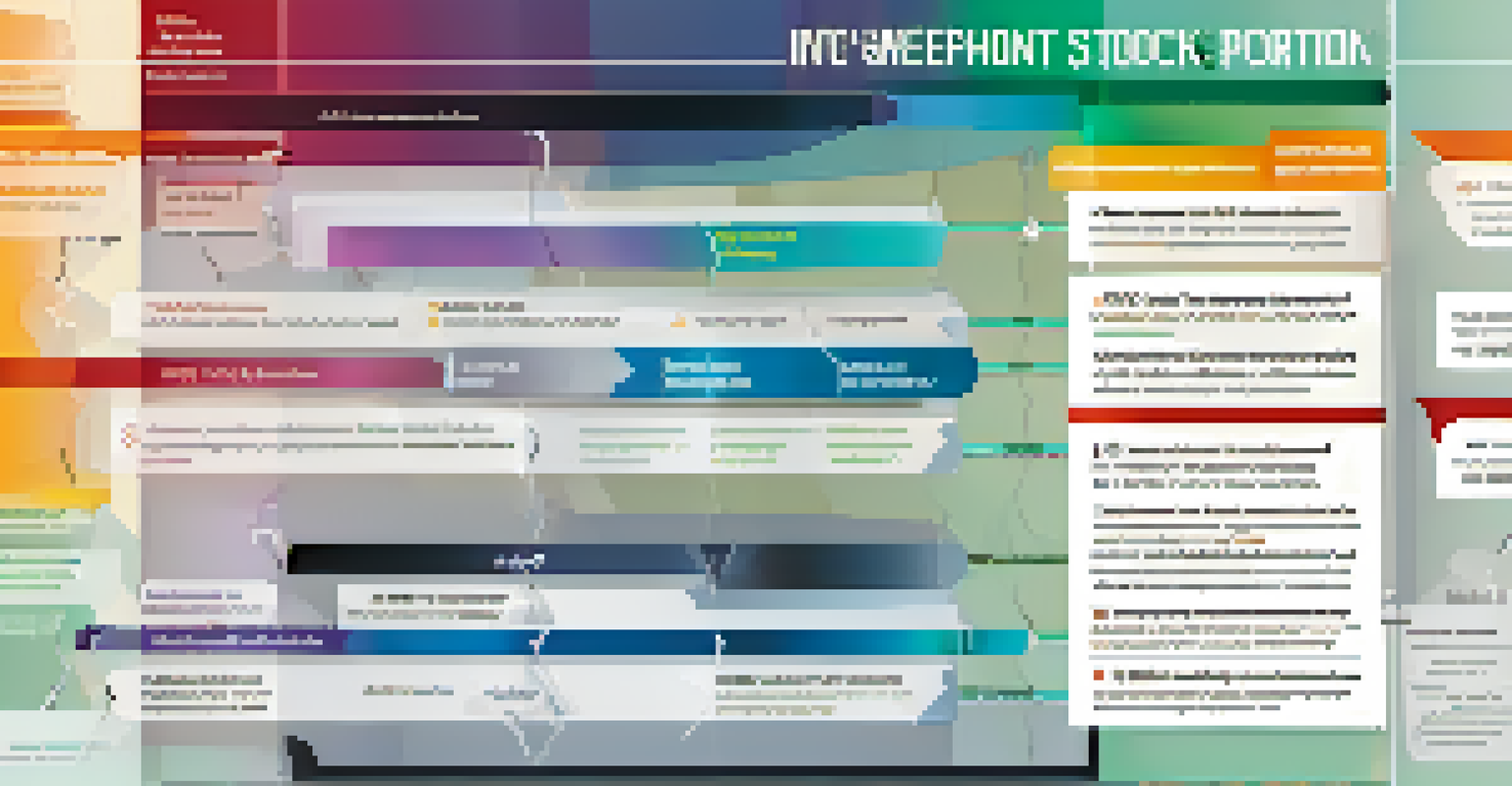Types of Stock Options: ISO vs. NSO Explained Clearly

What Are Stock Options and Their Importance?
Stock options are contracts that give employees the right to buy company shares at a predetermined price. This can be a valuable part of compensation, aligning employees' interests with the company's performance. Understanding stock options is essential for maximizing their potential benefits in your financial planning.
In investing, what is comfortable is rarely profitable.
When employees are granted stock options, they essentially receive a 'ticket' to buy shares, typically at a discount. This can lead to significant financial gains if the company's stock price rises. Thus, it’s crucial to grasp how different types of stock options work to make informed decisions about your investments.
In the world of stock options, there are two main types that employees encounter: Incentive Stock Options (ISOs) and Non-Qualified Stock Options (NSOs). Each type has unique tax implications and benefits, making it essential to distinguish between them for effective financial strategy.
What Are Incentive Stock Options (ISOs)?
Incentive Stock Options (ISOs) are a type of stock option that can offer significant tax benefits. They are often granted to employees as part of their compensation package and can only be offered by corporations. The primary appeal of ISOs lies in their favorable tax treatment, where gains can be taxed at the lower capital gains rate instead of ordinary income tax.

One key feature of ISOs is that they must be exercised within a specific timeframe, typically 10 years from the grant date. If the shares acquired through ISOs are held for at least one year after exercising and two years after the grant date, employees can enjoy the capital gains tax advantage. This requirement encourages long-term investment in the company.
However, ISOs do come with limitations, such as a maximum value of $100,000 that can be exercised in a calendar year. If the value exceeds this limit, the excess is treated as a Non-Qualified Stock Option (NSO). Understanding these nuances can help employees make informed decisions about exercising their options.
What Are Non-Qualified Stock Options (NSOs)?
Non-Qualified Stock Options (NSOs) differ from ISOs primarily in their tax treatment and eligibility. Unlike ISOs, NSOs can be granted to employees, consultants, and board members, making them more widely available. This flexibility allows companies to attract a broader range of talent through their stock option plans.
The stock market is filled with individuals who know the price of everything, but the value of nothing.
When NSOs are exercised, the difference between the exercise price and the fair market value of the stock is taxed as ordinary income. This means that employees might face a higher tax bill upfront compared to ISOs. However, NSOs do not have the same restrictions as ISOs, providing more freedom when it comes to exercising the options.
Another advantage of NSOs is that they have no limit on the amount that can be exercised in a single year. This can be particularly beneficial for employees who want to maximize their investment potential or manage their tax liability strategically. Understanding the implications of NSOs can help employees navigate their options effectively.
Key Differences Between ISOs and NSOs
While both ISOs and NSOs serve the purpose of providing employees with stock options, their key differences lie in tax treatment and eligibility. ISOs offer favorable tax treatment but come with stricter regulations, while NSOs provide more flexibility and can be granted to a wider group of individuals. Understanding these differences is crucial for employees assessing their stock option strategy.
For instance, ISOs must be held for a specific duration to qualify for capital gains tax treatment, while NSOs are taxed at the time of exercise as ordinary income. This can significantly affect an employee's financial planning and post-exercise strategy. Knowing when to exercise options and how they are taxed can lead to more favorable financial outcomes.
Additionally, the limitations on ISOs regarding the total value that can be exercised in a year can influence how a company structures its compensation plans. Employees should weigh these factors carefully when deciding whether to pursue ISOs or NSOs, as each option presents unique advantages and challenges.
Tax Implications of ISOs vs. NSOs
The tax implications of ISOs and NSOs are among the most significant differences and can greatly impact an employee's financial situation. With ISOs, if the holding requirements are met, gains are taxed at a lower capital gains rate, making them more tax-efficient for long-term holders. However, exercising ISOs can lead to alternative minimum tax (AMT) implications, which can catch some employees off guard.
On the other hand, NSOs are taxed as ordinary income at the time of exercise, which can lead to a larger tax bill in the year of exercise. This upfront tax liability can deter employees from exercising their options, especially if they are not ready to sell the shares immediately. Understanding when to exercise and sell is key to managing the tax burden effectively.
Employees should consult tax professionals to navigate the complexities of stock option taxation. By doing so, they can create a strategy that aligns with their financial goals and minimizes their tax liabilities. Knowledge of tax implications is critical in maximizing the benefits of ISOs and NSOs.
How to Decide Between ISOs and NSOs
Choosing between ISOs and NSOs can feel overwhelming, but breaking it down into key factors can help simplify the decision. Employees should consider their current tax situation, investment goals, and whether they plan to hold onto the stock long-term or sell it shortly after exercising. These factors can heavily influence which type of option is more beneficial.
Additionally, understanding your company’s stock option plan can provide insights into which option may be more advantageous. Companies may offer ISOs to retain top talent and encourage long-term investment, while NSOs might be used to reward a broader range of contributors. Analyzing these offerings in conjunction with personal financial goals is essential.
Ultimately, employees should assess their risk tolerance, financial needs, and long-term objectives. Consulting with financial advisors can provide personalized guidance to help make an informed decision. This proactive approach can lead to a more strategic use of stock options in overall financial planning.
Conclusion: Making the Most of Your Stock Options
Understanding the differences between ISOs and NSOs is crucial for employees looking to maximize their stock options. Each type offers unique benefits and challenges that can influence an employee's financial strategy. By grasping these concepts, individuals can make informed decisions that align with their financial goals.
As companies continue to use stock options as a key part of their compensation packages, employees who take the time to understand these options will be better equipped to navigate their choices. This knowledge empowers them to leverage their options effectively, whether for tax benefits, investment growth, or overall financial planning.

Investing time in learning about ISOs and NSOs can yield significant returns, both financially and professionally. So, whether you’re just starting your career or are a seasoned employee, take the opportunity to explore these stock options and make the most out of your compensation package.